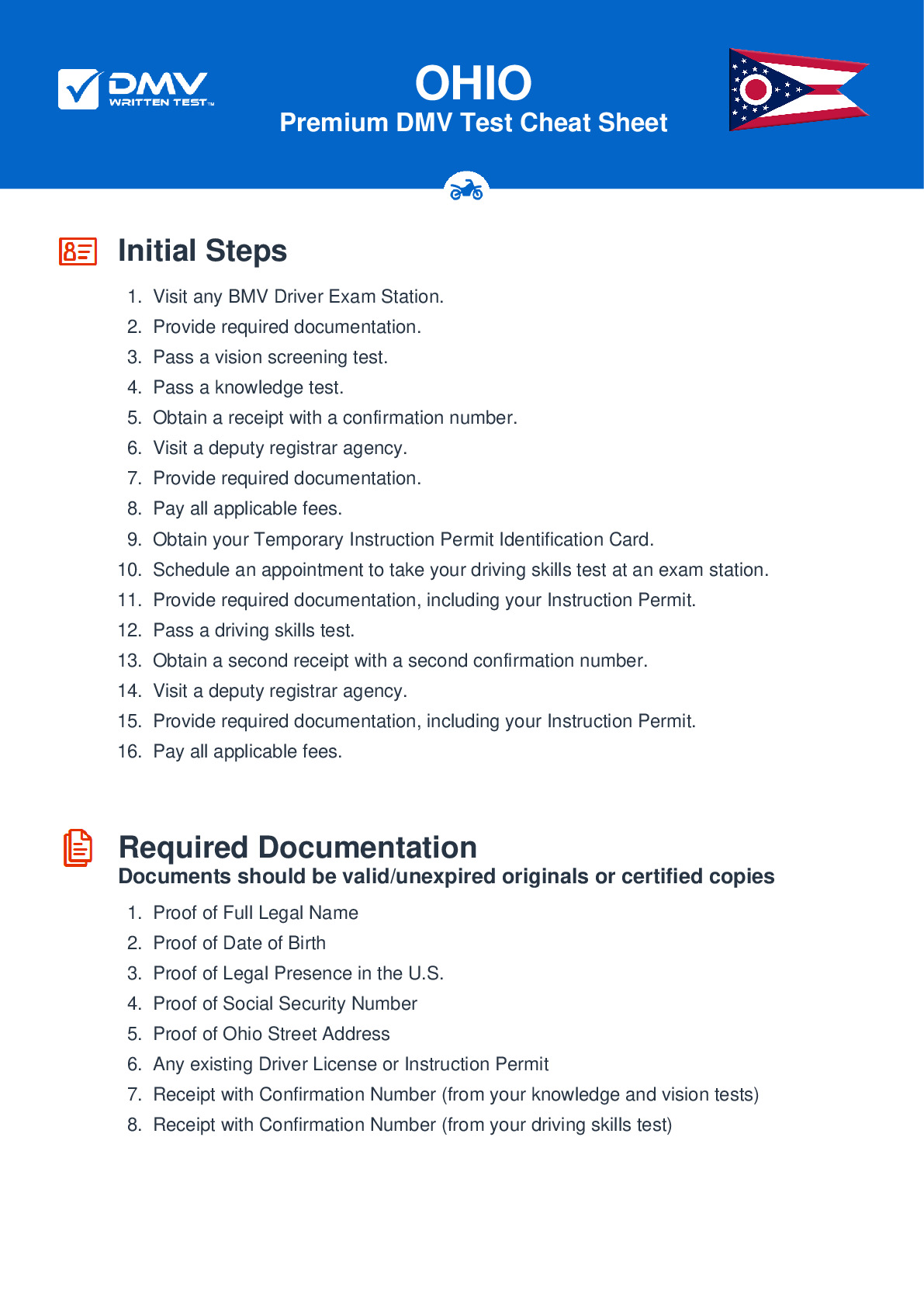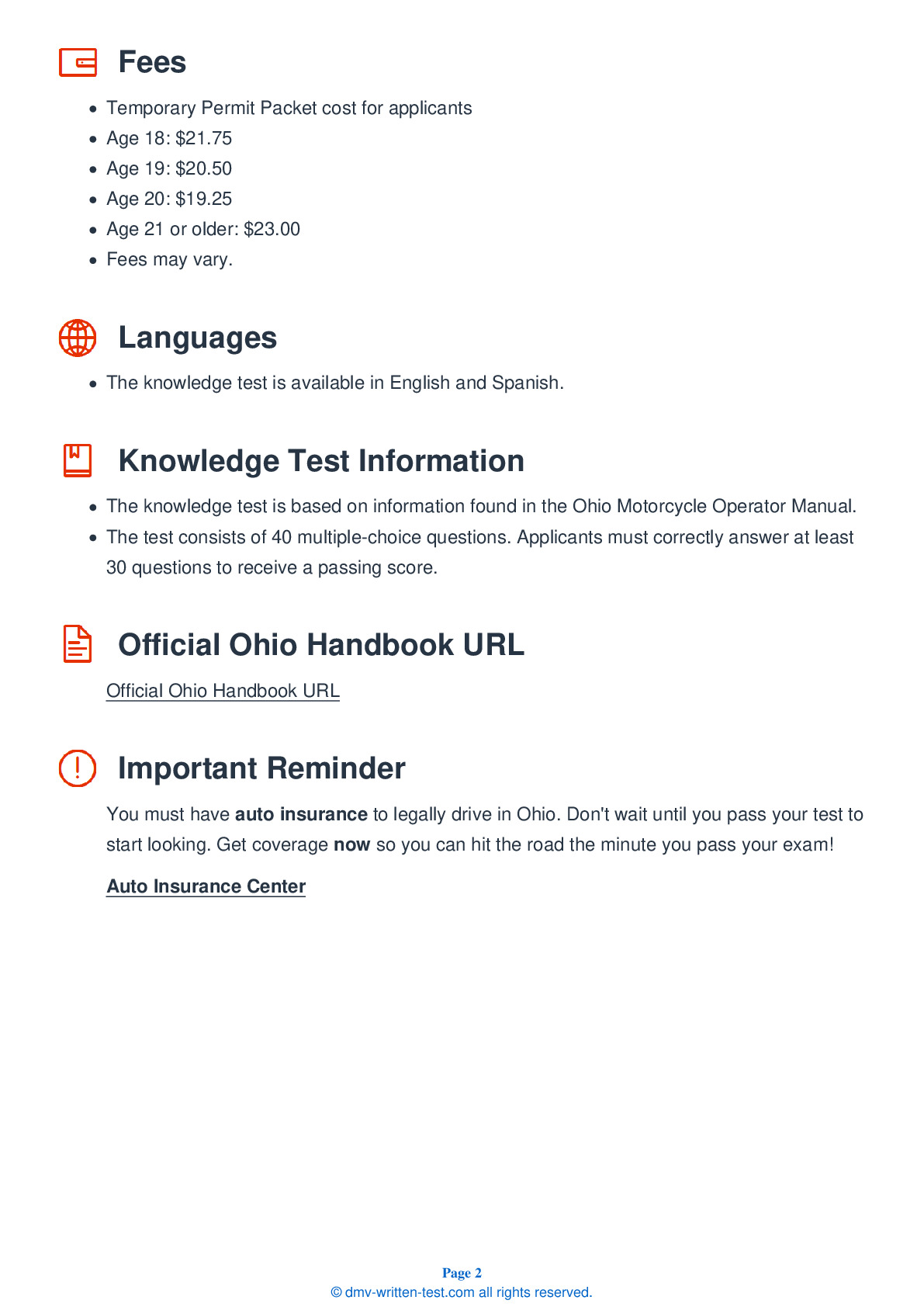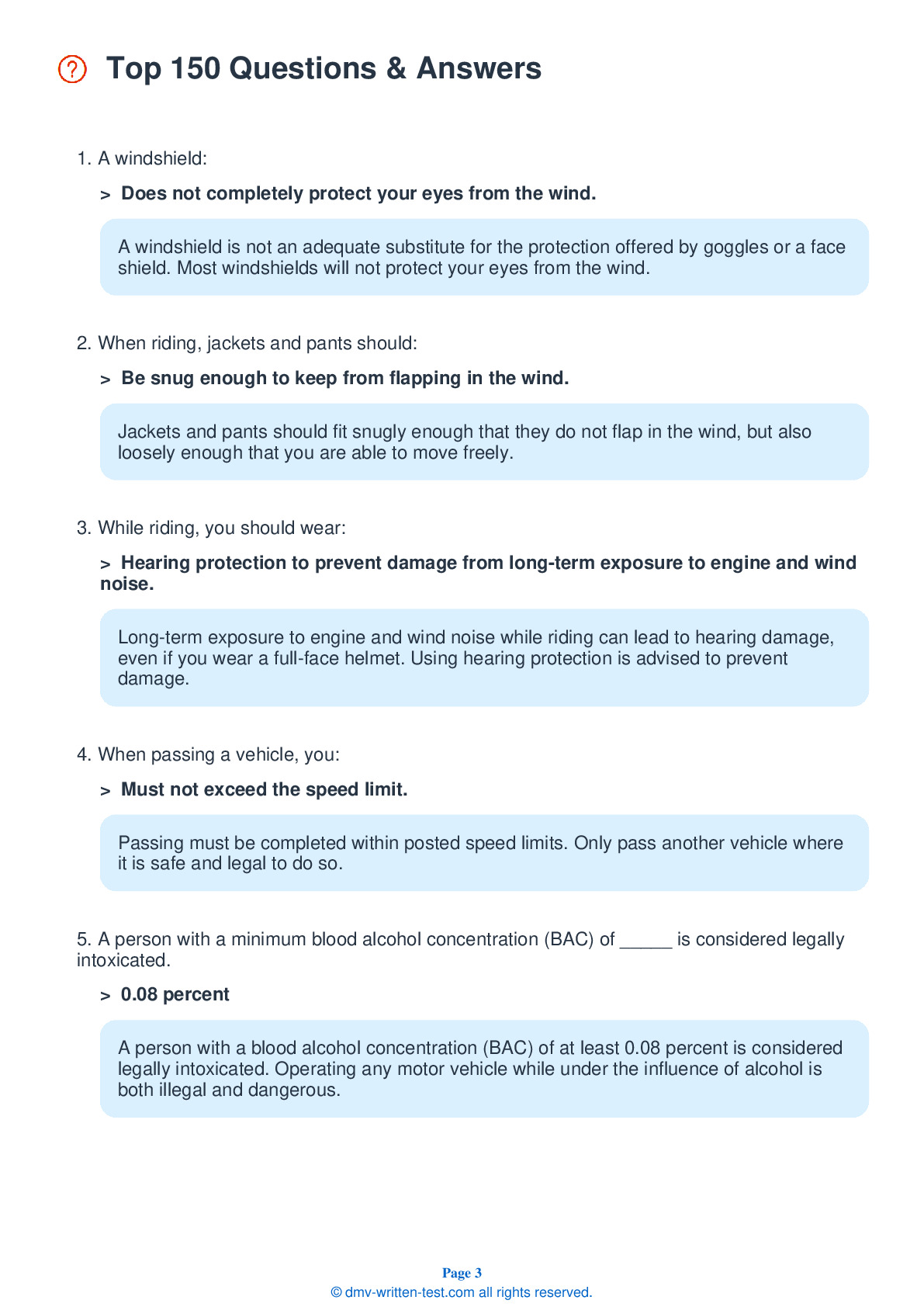2025 Ohio Motorcycle Permit Test 3
The following questions are from real DMV written motorcycle permit tests. These are some of the actual permit questions you will face in Ohio when getting your motorcycle learners permit. Each motorcycle theory practice test question has three answer choices. Select one answer for each question and select "grade this section." You can find this button at the bottom of the drivers license quiz. For a complete list of questions and answers for Ohio please visit https://cheat-sheets.dmv-written-test.com/en/ohio/motorcycle.
Number of Tests
Number of Question
Passing Score
9. You have been drinking alcohol. If you wait an hour for each drink before riding your motorcycle:
Explanation
On average, the body can eliminate the alcohol content of about one drink per hour. However, some alcohol may accumulate in the body even if a person consumes only one drink per hour. Their abilities and judgment can still be impaired.
10. You approach an emergency vehicle that is stopped on the side of the road while using its flashing lights. You should:
Explanation
If you approach an emergency vehicle, tow truck, or roadside assistance vehicle that is stopped with its lights flashing, you must change lanes to allow the vehicle extra space and proceed with caution. Always slow down and be prepared to stop when you approach an emergency scene.
11. Footrests:
Explanation
Keep your feet firmly on the footrests for balance. The motorcycle should be equipped with passenger footrests. Firm footing prevents your passenger from falling off and pulling you off, too.
12. The faster you drink alcohol:
Explanation
The faster you drink, the faster the alcohol will accumulate in your body. Alcohol leaves a person's system at an average of one drink per hour. If you consume more than one drink in an hour, you will still have alcohol in your body after one hour has passed.
13. __________ can be a cause of collisions involving motorcycles.
Explanation
Following too closely, or "tailgating," can be a major factor in collisions caused by motorcycles. When riding behind another vehicle, maintain a safe following distance.
14. The front brake:
Explanation
Always use both brakes any time you slow or stop. It is safe to use the front brake, which is more powerful than the rear brake, as long as you use it properly.
15. If vehicles or other potential hazards are to your right, you should ride on which side of your lane?
Explanation
When riding on the road, position yourself in a manner that allows you the most possible space. If there are hazards to your left, ride on the right side of your lane. If there are hazards to you right, ride on the left side of your lane.
16. A sign that your rear tire has suddenly gone flat is that:
Explanation




